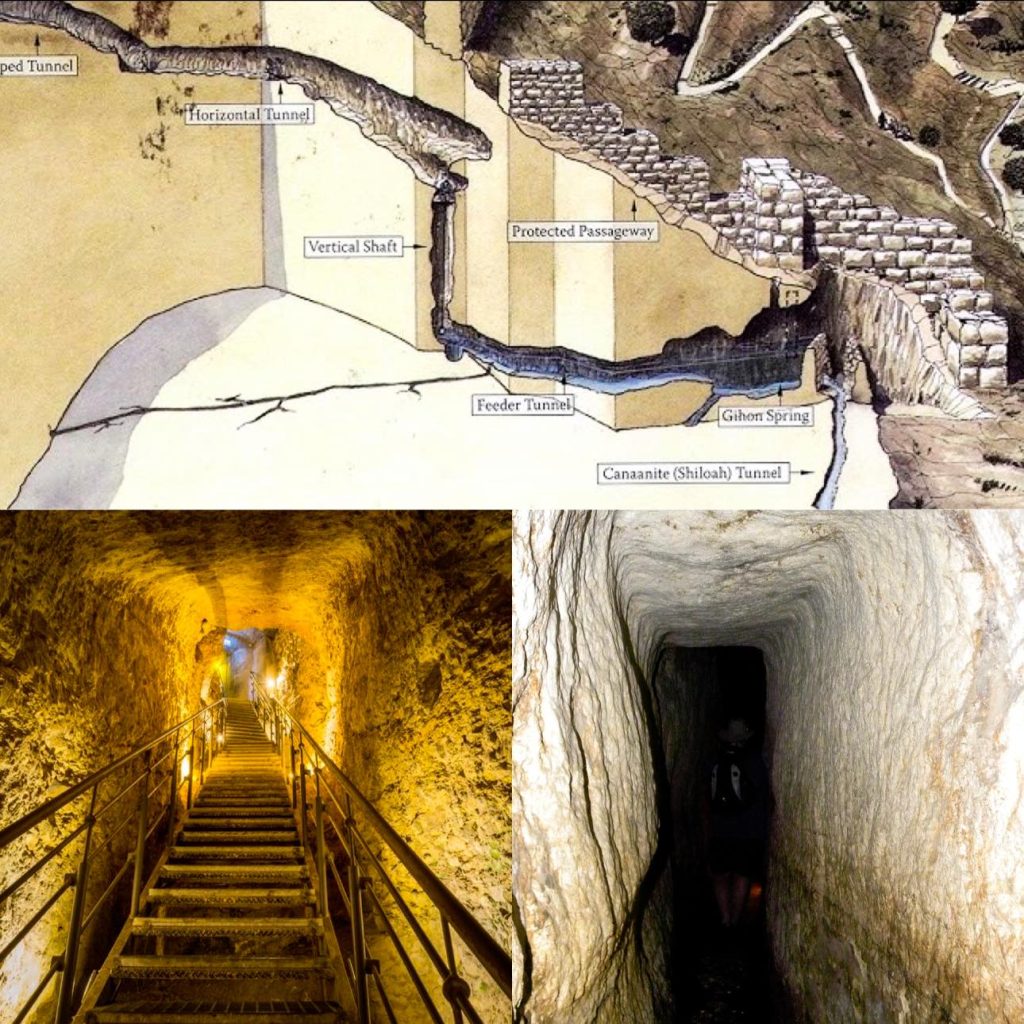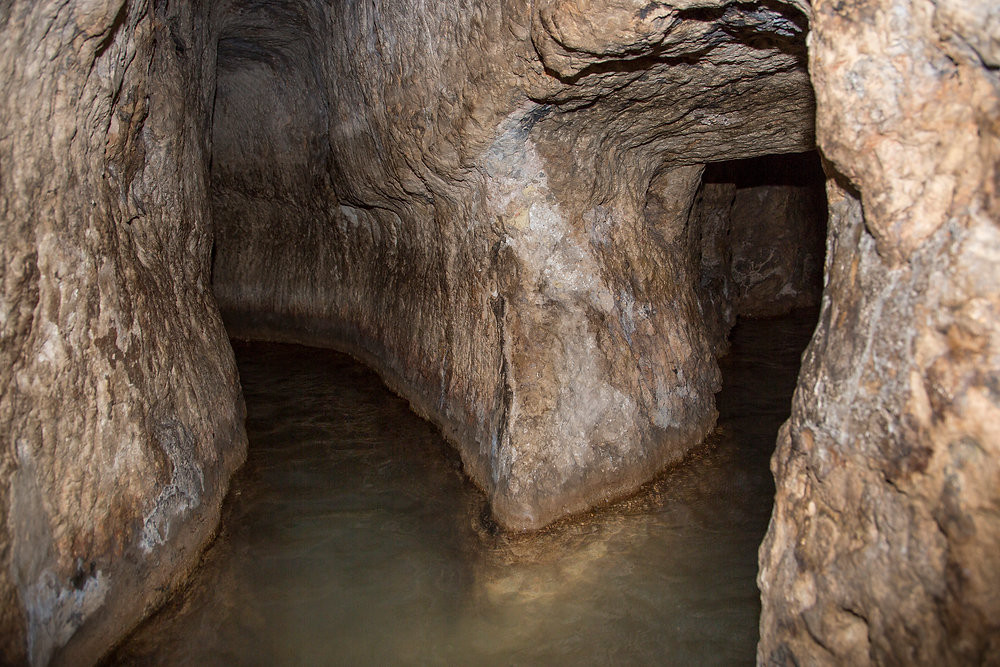At the heart of Jerusalem lies an extraordinary testament to ancient engineering brilliance: the Siloam Tunnel, also referred to as Hezekiah’s Tunnel. This underground marvel, carved through solid rock over 2,700 years ago, stands as a striking example of human ingenuity and resilience. It is a remarkable legacy that continues to captivate historians, archaeologists, and visitors alike.
An Ingenious Solution to an Impending Threat
In the year 701 BC, the Assyrian empire loomed as a formidable threat to Jerusalem. King Hezekiah, recognizing the vulnerability of his city’s water supply, devised a bold and strategic response. The Gihon Spring, located outside the protective city walls, was Jerusalem’s primary water source. In the event of a siege, access to this spring would have been catastrophic for the city’s survival. Hezekiah’s solution was both daring and innovative: to redirect the waters of the Gihon Spring into a secure location within the city, the Pool of Siloam.

This audacious plan required more than just courage—it demanded precision, labor, and an unyielding determination to succeed against seemingly insurmountable odds. What followed was the construction of the Siloam Tunnel, an achievement that has since become one of the most celebrated engineering feats of the ancient world.
A Tale of Two Teams and an Unbelievable Meeting
The process of constructing the Siloam Tunnel is as fascinating as the structure itself. Two teams of workers, equipped with nothing more than primitive tools, began their arduous task from opposite ends of the planned 533-meter route. Their mission was clear: to carve a winding tunnel through solid limestone, using only their knowledge of the terrain and rudimentary chisels. What makes their accomplishment truly astonishing is that these two groups managed to meet precisely in the middle of their subterranean journey.
Despite the challenges of working underground with no modern equipment, these ancient laborers demonstrated exceptional coordination and precision. The Siloam Tunnel’s winding path suggests that the workers followed natural fissures in the rock, yet their ultimate convergence remains a marvel of ancient surveying and planning. This success speaks volumes about the determination, communication, and expertise of those who undertook this monumental task.
Silent Testimonies: The Inscriptions of Coordination
Hidden within the walls of the tunnel are inscriptions that provide rare insights into its construction. These ancient carvings, discovered during archaeological exploration, reveal the methods and coordination employed by the workers. The inscriptions document the challenges they faced, the techniques they used, and their eventual triumph. These messages, etched into the stone, serve as a direct link to the minds and hands of the individuals who reshaped the earth itself to secure their city’s future.
One particularly famous inscription, known as the Siloam Inscription, commemorates the completion of the tunnel. It describes how the two teams worked tirelessly and with incredible precision to meet in the middle, emphasizing the human spirit of collaboration and determination.
An Immersive Journey Through Time
For modern visitors, stepping into the Siloam Tunnel is like embarking on a journey back in time. The tunnel’s dimensions vary throughout its length, with some sections requiring visitors to crouch as they navigate its narrow, winding passages. The air is cool and damp, carrying the faint scent of ancient stone and flowing water—a reminder that this underground channel still functions as it did millennia ago.
As explorers wade through the knee-deep waters that course through the tunnel, they are enveloped by a palpable sense of history. Every chisel mark, every curve in the rock, and every uneven surface tells a story of perseverance and ingenuity. It is impossible not to marvel at the effort required to bring such an ambitious project to life in an era devoid of modern technology.
A Timeless Monument to Human Ingenuity
The Siloam Tunnel is far more than a relic of the past; it is a living testament to the boundless potential of human creativity and problem-solving. The ancient engineers who envisioned and executed this project defied the limitations of their time, achieving what many would consider impossible even today. Their achievement serves as a powerful reminder of the strength and resourcefulness that humans can muster when faced with adversity.
The legacy of the Siloam Tunnel extends beyond its historical significance. It challenges us to reflect on the ingenuity of our ancestors and the ways in which their innovations continue to inspire. The tunnel is a vivid reminder that the human spirit, when driven by necessity and determination, knows no bounds.
Lessons for the Modern World
In an age of advanced technology and sophisticated engineering, the story of the Siloam Tunnel remains profoundly relevant. It reminds us of the importance of strategic thinking, teamwork, and perseverance in overcoming challenges. The tunnel is a symbol of how human beings, even with limited resources, can achieve extraordinary things when united by a common purpose.

As we admire this underground wonder, we are invited to consider the legacy we will leave behind for future generations. The Siloam Tunnel stands as a beacon of hope and a testament to the enduring power of innovation. It inspires us to push the boundaries of what we believe is possible, to work together toward common goals, and to face challenges with the same determination and ingenuity as those who carved this tunnel through solid rock so many centuries ago.
Conclusion
The Siloam Tunnel is more than an archaeological curiosity—it is a bridge between past and present, a symbol of human achievement, and a source of inspiration for all who encounter its story. As visitors traverse its ancient passageways and marvel at its construction, they are reminded of the incredible potential within all of us to overcome adversity and accomplish the extraordinary. This underground marvel, hidden beneath the streets of Jerusalem, will forever stand as a tribute to the ingenuity, courage, and determination of those who dared to dream—and to build.





